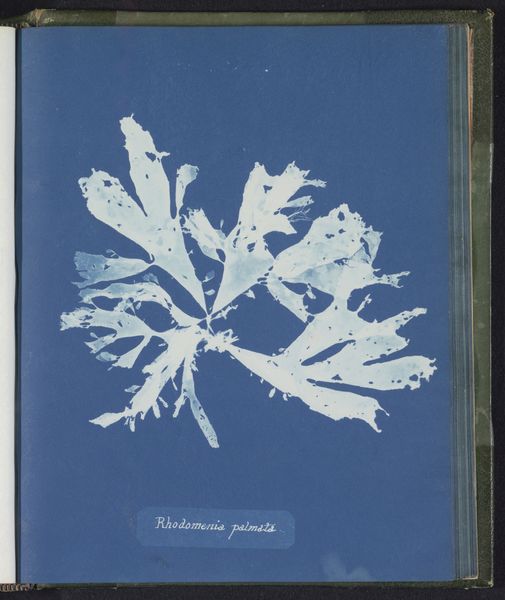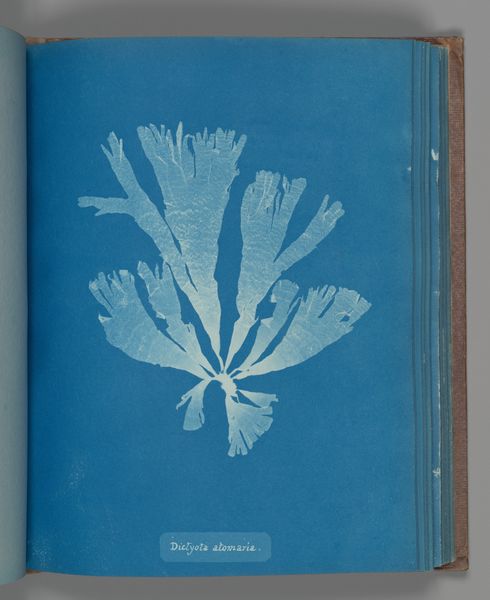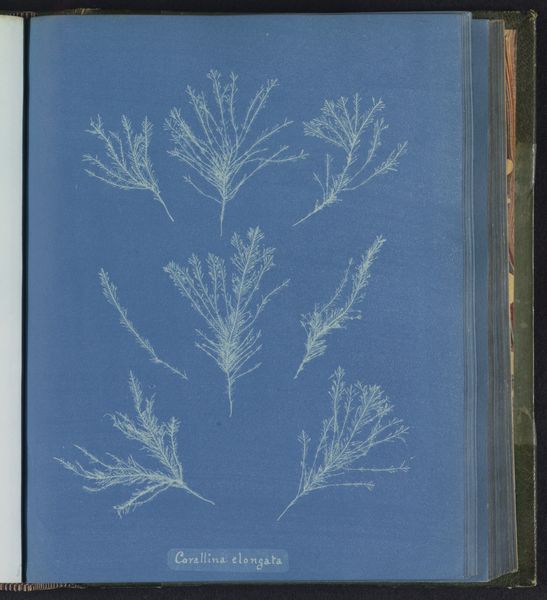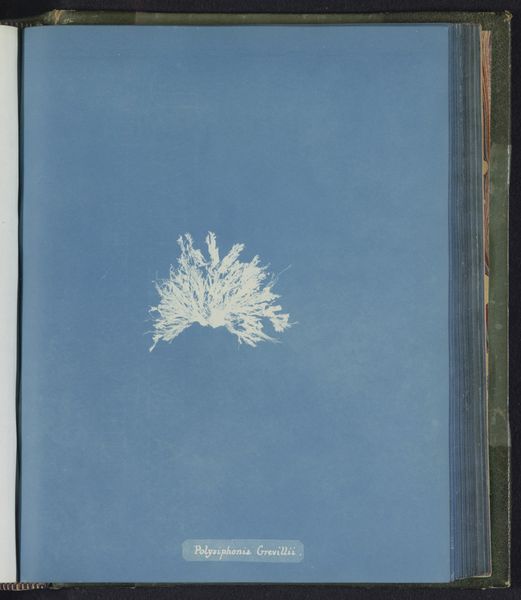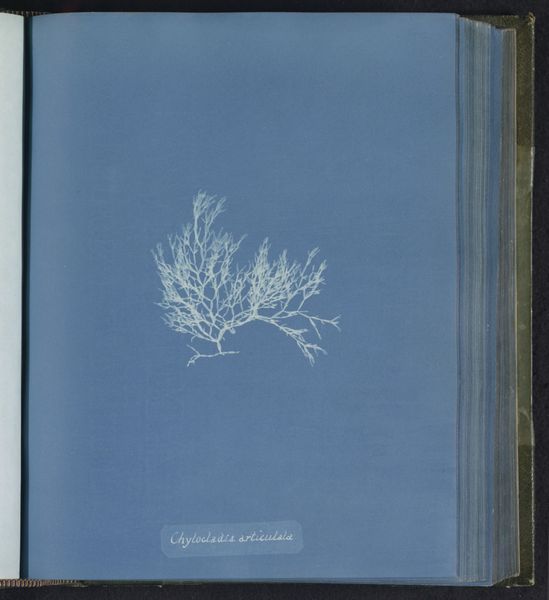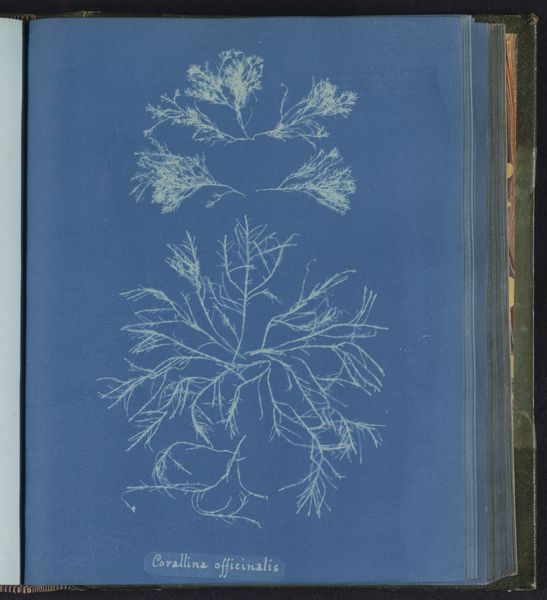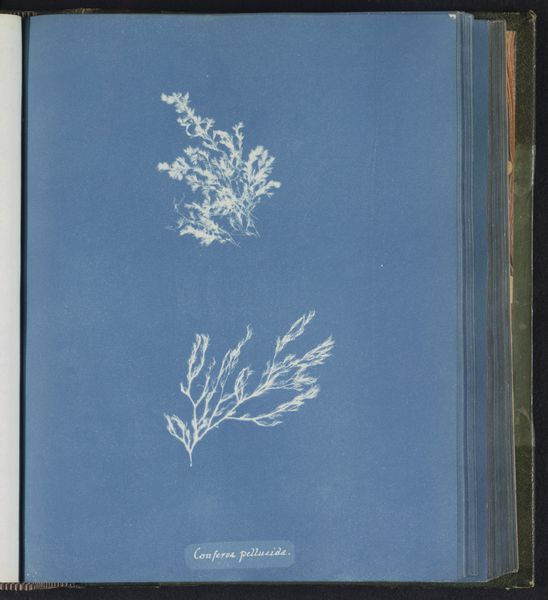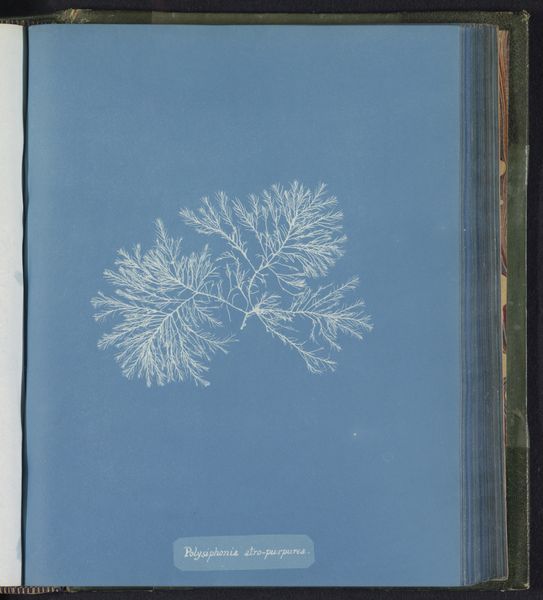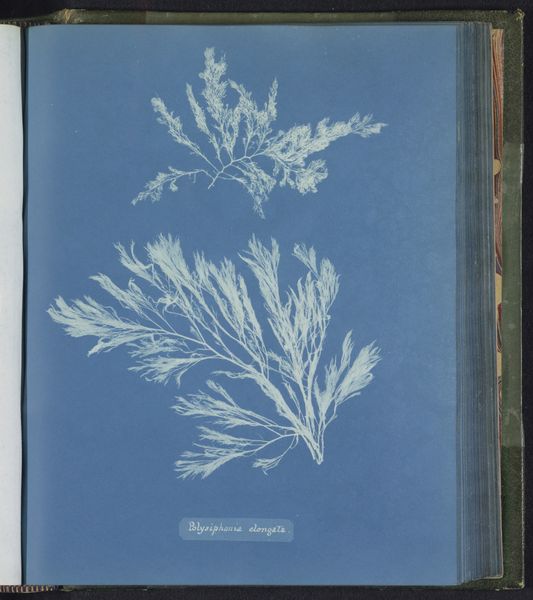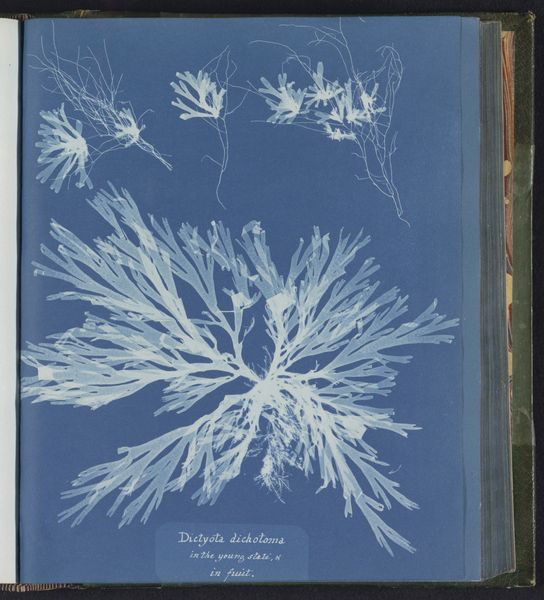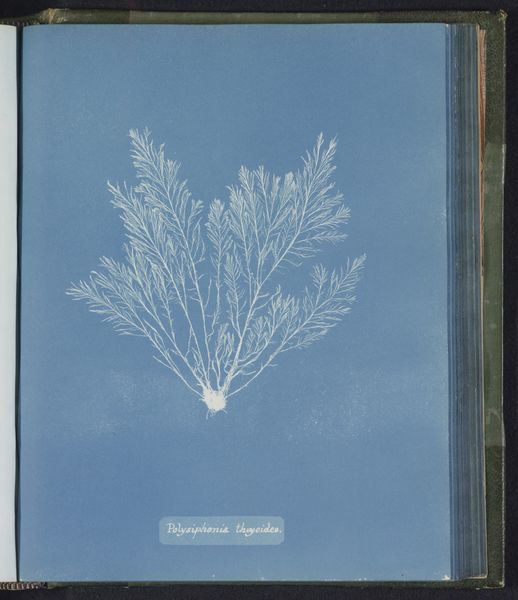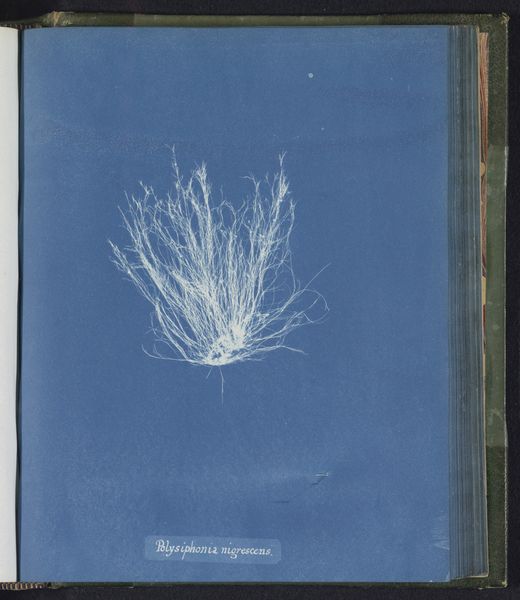
print, cyanotype, photography
# print
#
cyanotype
#
photography
#
realism
Dimensions: height 250 mm, width 200 mm
Copyright: Rijks Museum: Open Domain
Curator: It looks like a ghostly sea creature, rising from the deep blue. It's quite delicate. Editor: Indeed! We're looking at "Dictyota atomaria," a cyanotype made sometime between 1843 and 1853 by Anna Atkins. This haunting realism isn’t paint or ink; it’s sunlight and chemistry capturing a piece of seaweed. Curator: Sun and seaweed… I imagine Atkins, out on some windswept shore, carefully arranging specimens. Was this purely scientific? Editor: Well, that's the interesting tension, isn't it? Atkins was documenting British algae scientifically—she published "Photographs of British Algae: Cyanotype Impressions" –but the cyanotype process itself lends a strangely artistic air. The deep Prussian blue is so evocative. Think of it as some of the earliest photographic books. Curator: It’s undeniably beautiful. Almost otherworldly, the stark white against that blue, the detailed impression of the algae... Did her work influence other artists at the time? Or photography in general? Editor: Absolutely. While scientific illustration had been around for ages, Atkins' work demonstrated the power of photography to capture detail and precision in the natural world. She used the accessible format of the book to communicate scientific findings beyond academic circles. These types of images shifted conceptions around truth, evidence, and accessibility in art, science, and public culture. Curator: The more I look at it, the more it feels like more than just a record of seaweed; it seems imbued with this quiet, reverent appreciation. Editor: Exactly! By placing her specimen in the sun and waiting, Atkins was making the deliberate decision to not only replicate, but translate this single piece of algae into her own perspective. Curator: Such a serene blue... It makes you wonder about the other things she photographed, and the sea, and that long-ago light... Editor: Indeed. And think about the impact these images still have – opening a door between scientific fact and aesthetic beauty.
Comments
No comments
Be the first to comment and join the conversation on the ultimate creative platform.
